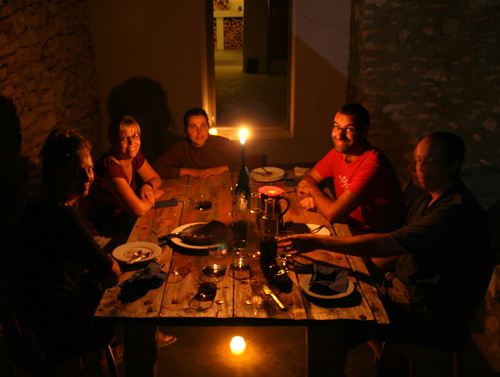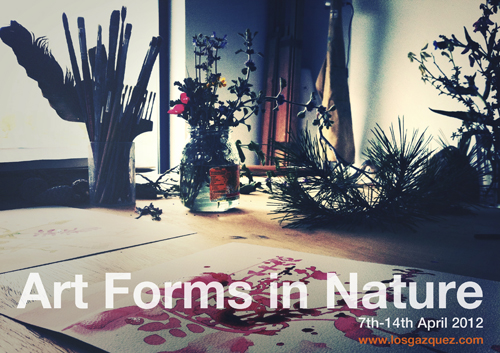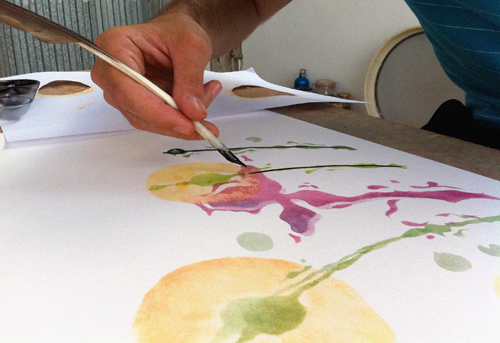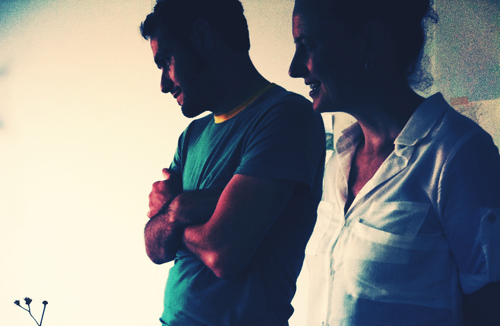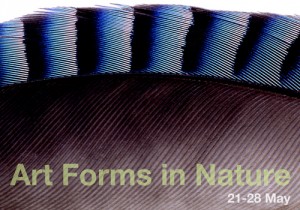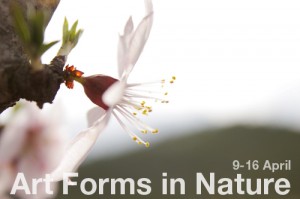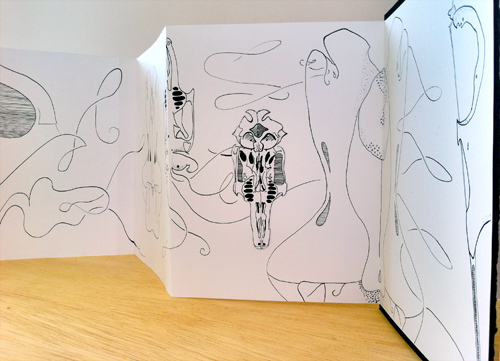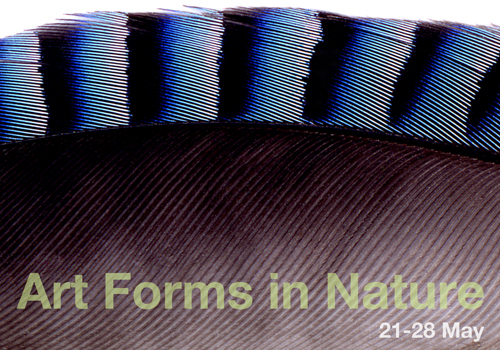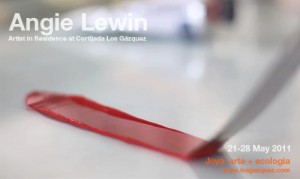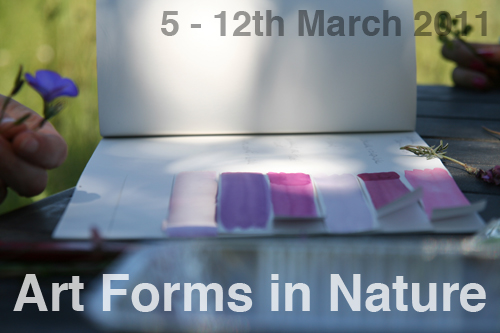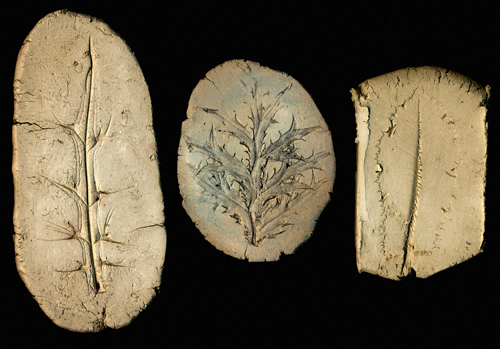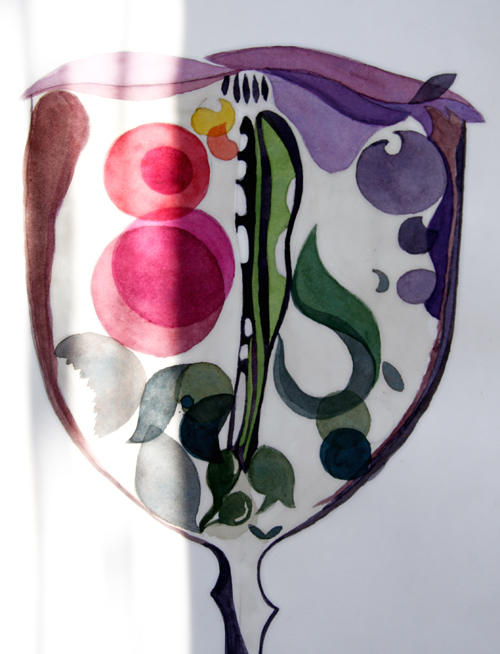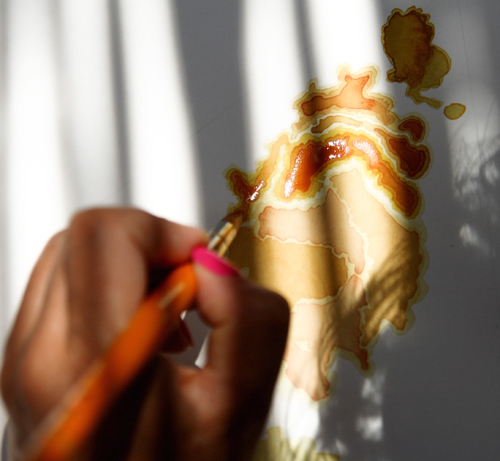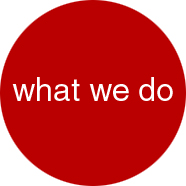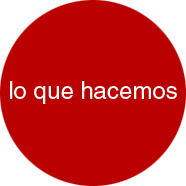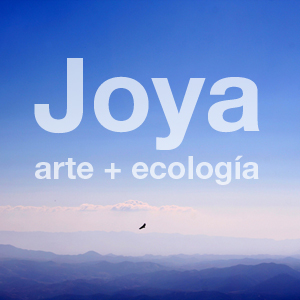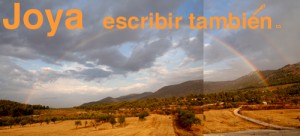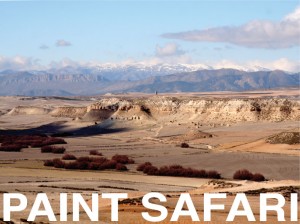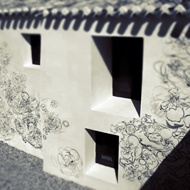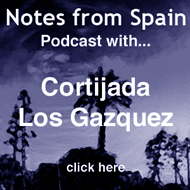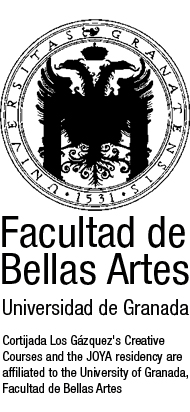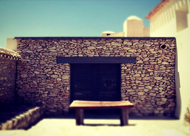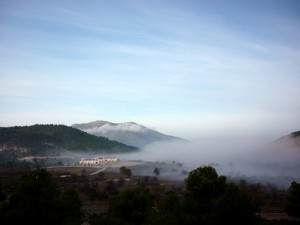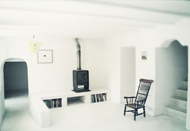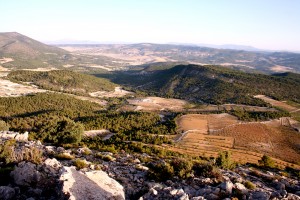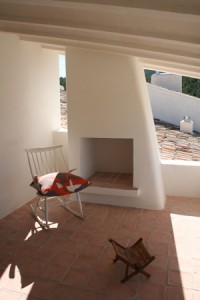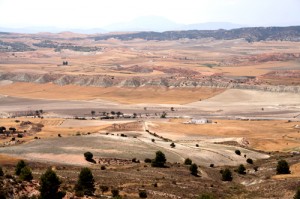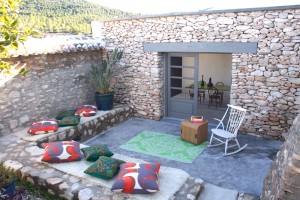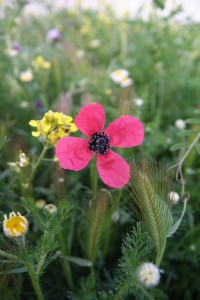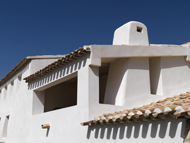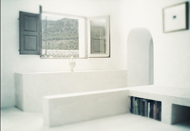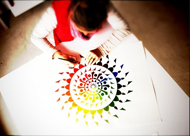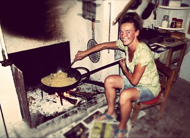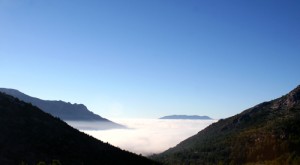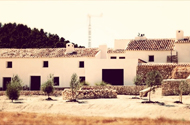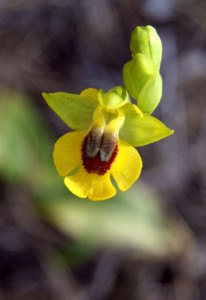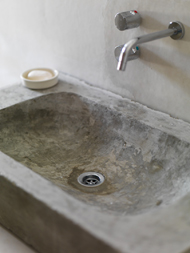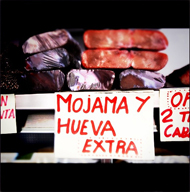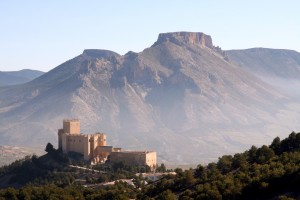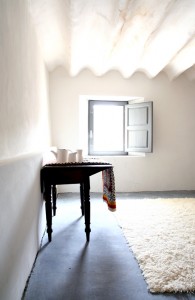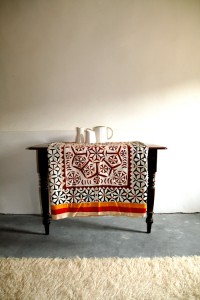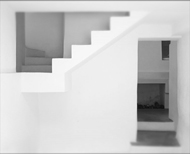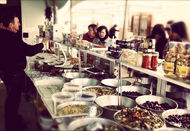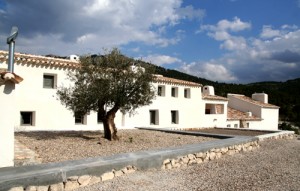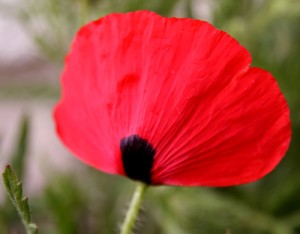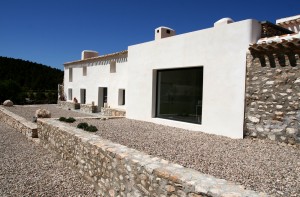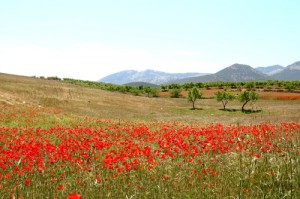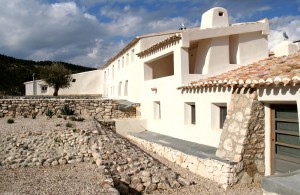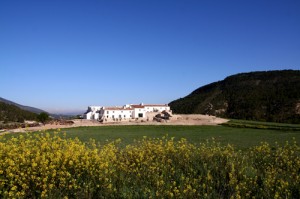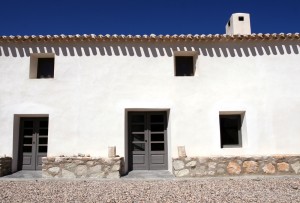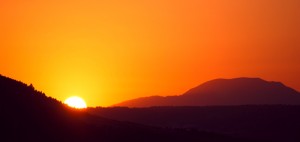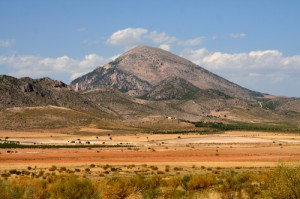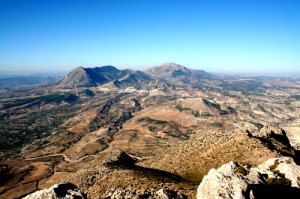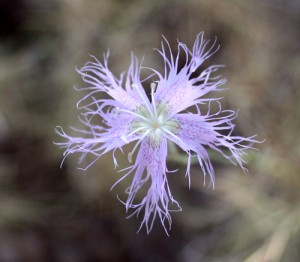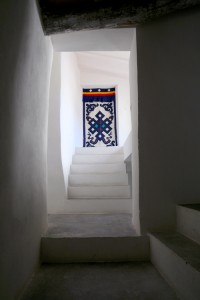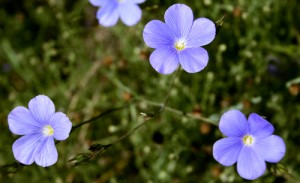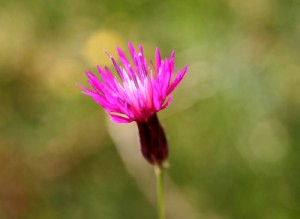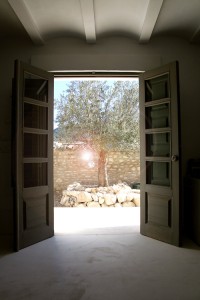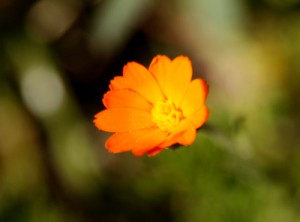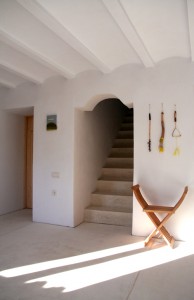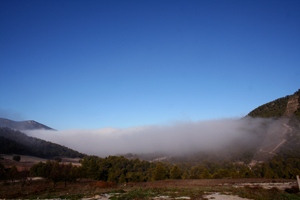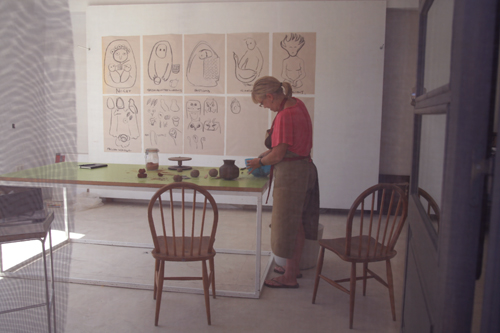
We start by looking at art history, subject-matter in the European tradition, allegory, symbolism and metaphor, subject matter which is as relevant today as ever. From Etruscans, Greeks and Italians through the Middle Ages to contemporary life.
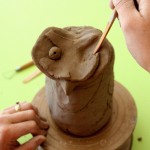 For our exercise we settle upon the theme of Night. She holds a child in each hand, a white one who is sleep, a black one who is death. She wears the mask of an owl and a garland of poppies.
For our exercise we settle upon the theme of Night. She holds a child in each hand, a white one who is sleep, a black one who is death. She wears the mask of an owl and a garland of poppies.
Our client is Canadian and although a beginner she is well accomplished in Soap Stone carving. Her influences are deeply First Nation Canadian which creates an interesting combination against the European tradition.
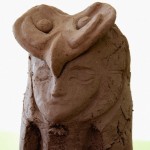 We chose a plinth based form as it seemed more appropriate to soap stone. The clay we excavated from around Los Gázquez keeping us in firm connection with the origins of the material we were to use. The inspiration for the owl mask came from examining local species in the Comarca de Los Vélez. Nights children are in relief on either side of the figure hiding in her hair. Her face is seen below the mask inevitably sleeping.
We chose a plinth based form as it seemed more appropriate to soap stone. The clay we excavated from around Los Gázquez keeping us in firm connection with the origins of the material we were to use. The inspiration for the owl mask came from examining local species in the Comarca de Los Vélez. Nights children are in relief on either side of the figure hiding in her hair. Her face is seen below the mask inevitably sleeping.
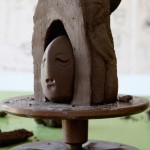 And to add further complication to our sculpture we chose to add Morpheus, the god of dreams, in a hollow mountain side, to the rear of the piece. He is like a Victorian vignette constructed as he is by different means. Still clay but it’s manipulation is different, it’s tradition more modernist, it’s lines more reductive and under less attention from the modellers knife.
And to add further complication to our sculpture we chose to add Morpheus, the god of dreams, in a hollow mountain side, to the rear of the piece. He is like a Victorian vignette constructed as he is by different means. Still clay but it’s manipulation is different, it’s tradition more modernist, it’s lines more reductive and under less attention from the modellers knife.
The intention was to push the exercise to it’s limits and for this it served it’s purpose. Now we had to search for greater creative potential…
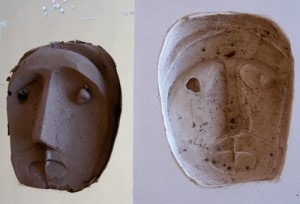 We made a face, tribal or primitive in it’s origins, the influence coming from Henry Moore and Picasso. It can be a struggle to move away from the purely representational and these kind of images are deceptively difficult. What appears to be crude manipulation of clay is actually complicated. The language is in the mark making, the line between success and failure is aloof and narrow. For this exercise we cast the clay face in Plaster of Paris, not to make a mould but to examine the fall of light. The fall of light is what creates the illusory values so important to learn when working in three dimensions. This is the crude, unclean result…
We made a face, tribal or primitive in it’s origins, the influence coming from Henry Moore and Picasso. It can be a struggle to move away from the purely representational and these kind of images are deceptively difficult. What appears to be crude manipulation of clay is actually complicated. The language is in the mark making, the line between success and failure is aloof and narrow. For this exercise we cast the clay face in Plaster of Paris, not to make a mould but to examine the fall of light. The fall of light is what creates the illusory values so important to learn when working in three dimensions. This is the crude, unclean result…
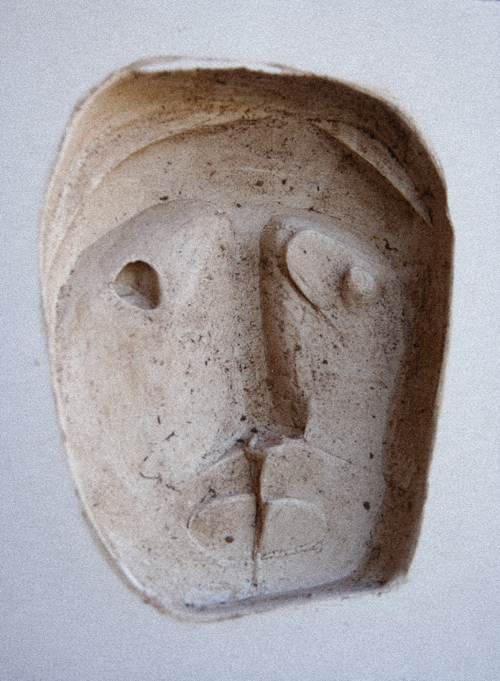 What you are looking at is the hollow impression of our clay sculpture. However the fall of light creates the opposite illusion. The face no longer recedes but grows and intensifies.
What you are looking at is the hollow impression of our clay sculpture. However the fall of light creates the opposite illusion. The face no longer recedes but grows and intensifies.
And our week flew by ending last night with our last supper looking a little like a painting by Joseph Wright of Derby.
